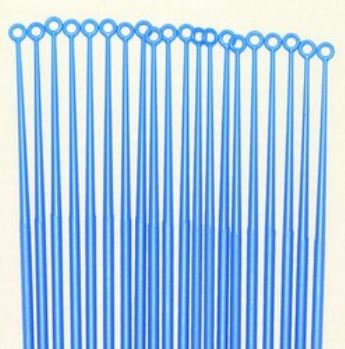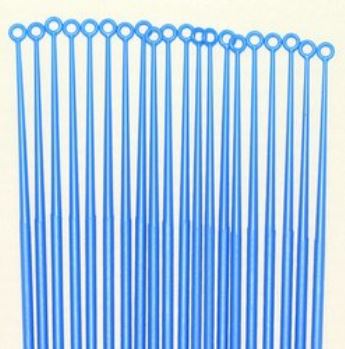INOCULATION LOOP, plastic, 1 µl, sterile, s.u.
STD
ELABMILP3--
Valid Article
Account code:
60200
HS Code:
901890
Last Updated on:
11/12/2024, 18:32:34
Former
Code(s):
ELAEZBD0189 ELAEZBE0911 ELABLOOPPS- ELABMILP31-
Single use
A single-use device, also referred to as a disposable device, is intended for use on one patient during a single procedure. It is not intended to be reprocessed (i.e., cleaned and disinfected or sterilized).
W05030302 - Microbiological culture, loops
European Medical Device Nomenclature (EMDN) is the nomenclature of use by manufacturers when registering their medical devices in the EUDAMED database. EMDN is characterised by its alphanumeric structure that is established in a seven-level hierarchical tree.
The product is part of at least one Kit.
A kit is a collection of products (medical and/or logistic) that are needed for a certain intervention in emergency. The choice and quantity of the articles reflects the MSF protocols for this specific situation. The use of Kits allows to start an intervention without a detailed evaluation.
INOCULATION LOOP, single use
Definition
Instrument composed of a handle with a loop, used to carry liquid or solid elements.
Synonym
Microloop, Culture or Culture media inoculating, streaker.
Specifications
Material
Plastic (flexible polymer)
Technical specifications
- Handle with loop at the end, polystyrene
- Sterile (gamma irradiation), for single use
- ELABMILP2--
- Volume loop: 10 µl
- Length: +/- 200 mm; Ø of the loop: 3.9 mm
- ELABMILP3--
- Volume loop: 1 µl
- Length: +/- 200 mm; Ø of the loop: 0.9 mm
Packaging & Labelling
Sterile unit packaging.
Instructions for use
Used to select a part of sample for smear preparation for microscopy investigation, or to select colonies of bacteria from growth on solid medium.
Storage
Shelf live: 36 months (1µl) to 70 months (10µl).
MSF requirements
In bacteriology laboratory, to be used in the BioSafety Cabinet (BSC) for the samples and cultures of bones and tissues.
Reserved for microbiology culture programmes.(TB culture and bacteriology)
Some restricted information has been hidden. Sign in
to see this information





![[KMEDKBLB02-] BACTERIOLOGY LABORATORY KIT, Mini-Lab STARTERKIT 800 samples](/web/image/product.template/579040/image_256/%5BKMEDKBLB02-%5D%20BACTERIOLOGY%20LABORATORY%20KIT%2C%20Mini-Lab%20STARTERKIT%20800%20samples?unique=ded0175)